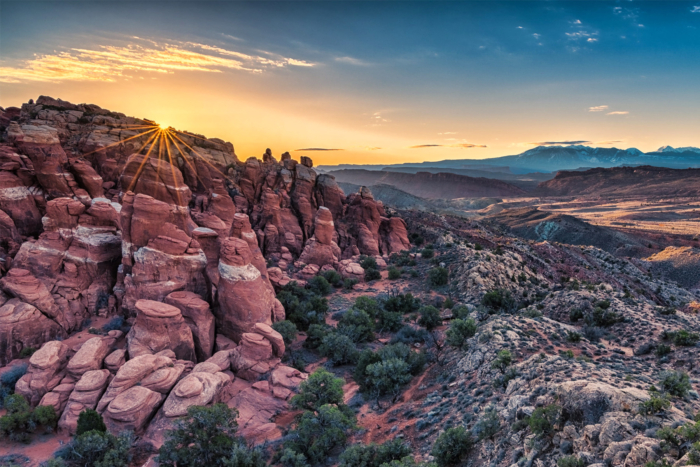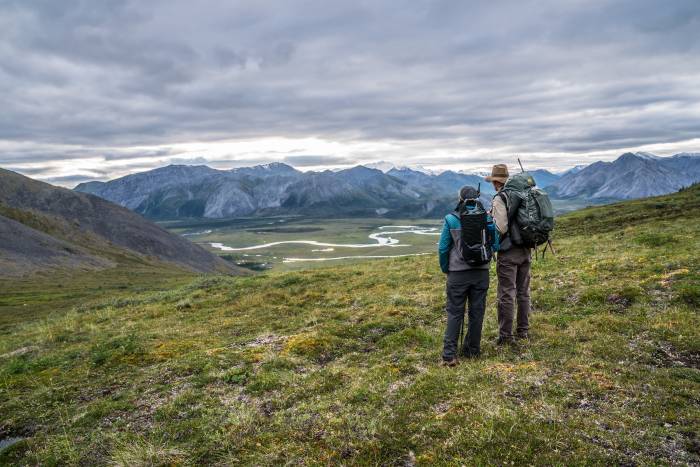
Shed Hunting With SITKA Gear

Shed Hunting: What You Need to Know

- Step one: Scout. “Watch bucks or bulls before the season for several weeks. They’ll stay in a 1-2-mile radius or in the same general area,” said Colton Heward, who’s been a hunting guide for 12 years and hunter for more than that by double.
- Plan ahead. Use that beta to make a plan before you go. Consider where the elk dine. “Focus on south-facing slopes, where the sun is melting off most snow. That’s where the best feed is going to be,” said Heward.
- Study property boundaries. Make sure you’re walking on public land. Apps like onX Hunt or GAIA GPS can help.
- Be aware of competition. Start your pursuit where people have not, for the best odds. If you see a collection of vehicles parked at a trailhead, go elsewhere.

- Survey the surroundings. With boots on the ground, as you scan the landscape, look for inconsistencies in the landscape’s texture and color. Check for a bright reflection off the bone, a smooth curl upward, or a sharp point.
- Use your glass. Use binoculars to scan the surrounding slopes in low-grass zones. “More than 50% of the sheds I’ve found were by sitting and glassing with binoculars. The antlers stick out. Binos give you an aerial view versus being on a hillside. Every diehard shed hunter finds the majority of their antlers in their glass,” said Heward.
- Look for clues. The elks’ bedding and their droppings are also big indicators that they’ve been hanging around, and there’s a nice likelihood they’ve left behind their crowns.

- Follow a sequence. As you hike, there are a couple of walking patterns you can use, especially if you’re searching for a second set and need to be very thorough. You can walk a grid, similar to avalanche rescue techniques, in 20-yard increments: Traverse across the slope, drop down or up 20-30 yards, and then walk back across the slope, creating a parallel course. Repeat. “You could also hike outward in a spiral, and the circle gets bigger each time,” said Heward.
- Don’t rush. This isn’t for Strava awards. “Go slow. When you go fast, you miss a lot of antlers,” Heward said. My shed hunt pace was 1 mile an hour. Relax your eyes, too. “Don’t look for the whole antler — look for a piece, like a tip of tine on the other side of brush,” said Heward.
- Look for pairs. If you find one antler, it’s not uncommon for the second one to drop within 10 yards in any direction, noted another hunting guide that was hanging with the group, Bryce Fielding. Though it’s fairly common to find the second antler close by, Heward has also found pairs 1-2 miles apart! You can tell they’re a match based on the size and symmetry.

- Keep going. Stay optimistic, said Heward, “Eventually, if you walk enough miles, you’ll trip into sheds. Every mile you walk increases your chances of finding an antler.”
How Snowfall Influences Where to Find Sheds
- Timeline. Following the prolonged and higher snow depths, elk were stressed and their bodies held onto the antlers a bit later than usual, by several weeks. Most of the sheds fell in April on the elks’ feeding grounds.

- Vegetation. A lucrative winter also meant ample vegetation — and it’s difficult (if not impossible) to find the sheds through nutritious and dense chest-high grass. Last year, close to 1,700 pounds of antlers were picked up on the ranch alone, said Taylor, which were sold at $16 per pound.
- Elevation. When shed hunting, a good target elevation range is between 6,000 and 7,200 feet on south-facing slopes, where the snow first melts, the ground is barest, and the grass first grows. Hence, the herd’s feed. I found one set at 7,500 feet and the second pair at 7,300 feet. The elk deadhead we found was in a steep ravine at 6,500 feet.
Shed Hunting: A Few Rules
- State regulations. Make sure to familiarize yourself with the state laws where you plan to shed hunt. In Utah, for instance, it’s illegal to move an antler that has a piece of skull attached, called a “deadhead.” If you want to take the find, you must first submit a report to the Utah Division of Wildlife to seek approval, a protocol that helps prevent poaching. As I made my way west to the truck, a few of us slid down a precarious face into a ravine, and where, 0.08 miles from the road, we uncovered a jaw-dropping dead head. Too bad we weren’t in Utah for longer! We left the large untouched skull-and-rack behind.

- Requirements. These can evolve from year to year and vary from state to state. Check with the local agencies where you plan to shed hunt regarding up-to-date requirements. For instance, at print, Utah requires shed hunters to complete an online ethics course to shed hunt.
- Bans. Regulatory agencies can instate new or temporary rules if needed, like the former 2023 shed hunting ban in Utah due to the heavy snow year, which supported the livelihood and chances of survival for the herds. As a result, antler gathering was prohibited from Feb. 7 to April 30, on private and public land statewide. “When an animal sheds, it’s at its lowest point: they lose 20-30% of their weight during winter when it’s 30 below. Disturbances have a cumulative effect, ruin additional reserves, and can kill the animal,” explained the ranch Wildlife Manager Scott McFarlane, the former Wildlife Program Coordinator for the Utah Division of Wildlife Resources.
Shed Hunting: A Fun Way to Hike


FAQ
Antlers are bone, initially covered in “velvet,” a fine hair that helps facilitate the growth through blood flow. These antlers differ from horns in that they grow from a pedicle that will eventually release them, unlike the one-and-done, permanent horns.
Of the species of ungulates that grow antlers, the males (in most cases) produce and shed a new set of antlers every year — which is mind-boggling when you consider how long it takes a human fingernail to grow. Antlers are initially pretty soft under their velvet and almost cartilaginous, growing, in some species, inches per day.
As sunlight hours change from spring to summer and hormone levels of the males increase in preparation for the autumn rut, those soft antlers begin to harden, cutting off blood supply to the velvet, which eventually is sheared off. This all leaves the animal with a hardened weapon, ready to take on his competition for the hearts of the ladies.
When sunlight changes again in winter/spring, those hormone levels drop, and so does the pedicle bond, leading to the eventual shedding of the antler.
As the animals mature, so do their returning antlers, growing bigger and more points each year.
Year over year, the overall breadth of the antler increases. The prongs become wider in circumference, longer, and more points grow, which increases the antler’s weight, size, and overall value.
Not only fun to find, sheds can also be gathered and sold for a range of purposes from lamp stands to book stops, knife handles, chandeliers, art, dog chew toys, Chinese medicine, and drawer handles.
Antlers could be worth $10-12 per pound for middle-of-the-road quality but could be priced less or more, said Kenny Taylor, who manages the (anonymous) ranch where we all stayed. Premium sets could range from $300 to $5,000.

Between late March and early May, elk drop their antlers, and the antlers of mule deer often drop sooner — from February to March. Moose antlers fall in December and January.
A brown antler is fresh and fell this season. Bleached white antlers signify that they’ve sat in the sun, and they could even be from a previous year. Shed antlers with pinkish tones are typically seniors, having laid on the ground for 4 or 5 years.











